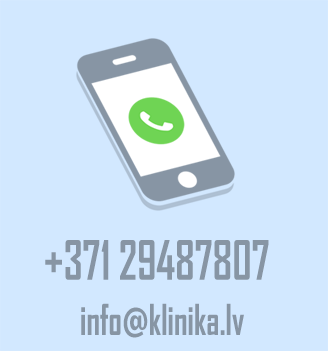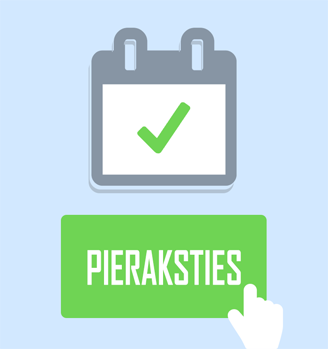Disc herniation is a spinal condition when gel-like center of the intervertebral disc is pushed out through the weakest point. When the disc protrusion touches or compresses the nearby spinal nerve, back or leg pain can occur. Conservative therapy without surgery is the first step towards recovery. With a teamwork treatment, 80% of people experience good results within about 6 weeks and patients can return to their daily routines. When conservative therapy fails, your doctor can recommend a surgery.
What is disc herniation?
The disc herniation occurs when due to a disc damage its gel-like substance is pushed through the fibrous ring. The gel-like substance chemically irritates spinal nerves. Pain occurs when spinal nerves ger inflamed and swollen due to pressure by disc herniation. Over time, herniations tend to shrink and pain partly or completely disappears. In most of the cases, this happens within 6 weeks.
To characterize disc herniation, there are various terms used. Disc vaulting (protrusion) occurs when the disc fibrous ring remains intact but there is a protrusion compressing the spinal nerves. The real disc herniation (called also rupture) happens when there are fractures in the disc’s fibrous ring and the gel-like substance from the center of the disc pushes through. Sometimes these herniations are so severe that pieces of the gel-like substance completely separate from the disc and reach the spinal column where nerves running from the spinal cord later connect and shape a sciatic nerve innerving legs.
What are the symptoms?
The disc herniation symptoms can be different depending on the herniation location and individual pain reaction. If your disc herniation is around the lumbar spine, you can feel pain radiating downwards to one or both legs and sometimes even feet. You can feel pain, similar to an electrical shock, when you stand, walk or sit. Activities like bending over, lifting heavy objects, turning around and sitting can increase your pain. Lying on your back with bent knees can be the most comfortable position as this relaxes the pressure on the intervertebral disc.
Sometimes pain is accompanied by numbness and tingling in your legs and feet. You can experience seizures or muscle spasms in your back or legs. In addition to your pain, you can experience weakness in leg muscles or loss of knee or ankle reflexes. In some exceptionally severe cases, you can also experience feet paresis or weakness (tripping while walking) or loss of control of bowl movement or urinary bladder. If you experience feet paresis or it is difficult to control your bladder or bowel functions, immediately seek medical assistance.
What are the causes?
Your discs can be vaulted due to herniation – as a result of a trauma, incorrect lifting of heavy objects, or this might also happen spontaneously. Aging is important factor. Along with the age, discs are drying and become harder. The outer wall of the fibrous ring becomes weaker and cannot contain the gel-like center. This material can vault or rapture the disc wall if the nerve is affected. Smoking as well as certain professional habits can lead to early disc degeneration.
Who are in risk group?
The disc herniation most often affect people from 30 to 40 years of age. Other people tasked with hard physical work are also face the same risks. Lumbar disc herniation s one of the most common back pain causes, radiating the pain to legs too. This happens 5 times more often than cervical spine disc herniation. Disc herniations in cervical spine shape only 8% of all cases, but disc herniations in thoracic spine – only 1-2%.
How the problem is diagnosed?
Consult your general practitioner when you feel the pain for the first time. Your doctor will collect your medical information to understand your symptoms, learn about your injuries, and lifestyle habits causing pain. The next step is checking muscle weakness or numbness to determine the source of pain.
Your doctor can send you to any of these tests:
- X-rays,,
- magnetic resonance imaging (MR),
- computer tomography (CT),
- electromyography (EMG)
Based on the results, you can be advised to consult a neurologist, neurosurgeon or orthopedist to determine further treatment.
What treatment methods are available?
Conservative non-surgical treatment is the first step towards healing; this might include medicines, resting, physical therapy, home exercises, epidural steroid injections (blockades) and pain management. With a teamwork treatment, 80% of people experience good results within about 6 weeks and patients can return to their daily routines. If conservative therapy fails, your doctor can recommend a neurosurgeon in order to do a surgery.
Conservative treatment:
In most of the cases, pain caused by disc herniation decreases within couple of days, but fully disappear within 4-6 weeks. One can feel results from reduced activity, cold/heat therapy, over-the-counter medicines. Your general practitioner can prescribe painkillers, non-steroid anti-inflammatory medicines, muscle relaxants and steroids. The physical therapy is aimed at allowing you to return to daily routines as fast as possible. Physical therapists can teach you a correct posture, how to lift heavy objects and walk correctly. Physical therapy exercises will strengthen your back, abdominal and leg muscles, increasing the flexibility of spine. Exercises and muscle strengthening are an important part of treatment and life to come. Some patients wish to try more holistic approach to therapy, e.g. needle therapy, acupressure, food supplements. These methods can help you to manage pain and improve your overall health.
Surgical treatment
Lumbar spine disc herniation surgeries are called discectomies (removal of a disc). Such a method must be selected when conservative therapy shows no essential results. The surgery is also recommended when there are signs of nerve damage, e.g. leg weakness or numbness. Microsurgical discectomy: a surgeon will do a 2-5cm incision on your back. To reach the vertebrae and damaged disc, spinal muscles are pushed aside. A small part of the vertebrae is removed to see the nerve roots and disc. The damaged part of the disc touching the spinal nerves are carefully removed by the use of special instruments. About 80-85% of patients successfully recover from discectomy and can return to daily life and work regiment in about 6 weeks.
Recovery and preventive measures
At some point in life, back pain affects 8 of 10 people. Positive attitude, regular physical activities and exercises will help to fight the pain which mostly gradually disappear within 6 weeks.
The prevention is based on the following:
- careful lifting of heavy objects,
- correct sitting, standing, walking and sleeping posture,
- exercising programme to strengthen your middle section muscles,
- ergonomically correct work environment,
- normal body weight,
- positive attitude and overcoming stress,
- non-smoking.




